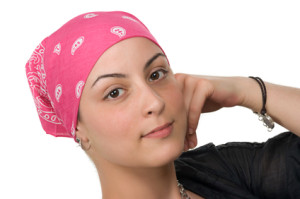Once a virtual death sentence, cancer today is a curable disease for many and a chronic illness for most. With continued advances in strategies to detect cancer early and treat it effectively along with the aging of the population, the number of individuals living years beyond a cancer diagnosis can be expected to continue to increase.
 Approximately 15.5 million Americans in the United States are cancer survivors. By 2026 that number is expected to reach 20 million. Anyone who has been diagnosed with cancer, from the time of diagnosis through the rest of his or her life is considered a cancer survivor. And while not all cancer survivors are older adults, many are simply because of the cumulative effect of years of lifestyle issues that are risk factors for their disease. Survivors less than or equal to 19 years old comprise 1% of the cancer survivor population, 6% of survivors are aged 20–39 years, 33% are aged 40–64 years and 60% (more than half) are aged greater than or equal to 65 years.
Approximately 15.5 million Americans in the United States are cancer survivors. By 2026 that number is expected to reach 20 million. Anyone who has been diagnosed with cancer, from the time of diagnosis through the rest of his or her life is considered a cancer survivor. And while not all cancer survivors are older adults, many are simply because of the cumulative effect of years of lifestyle issues that are risk factors for their disease. Survivors less than or equal to 19 years old comprise 1% of the cancer survivor population, 6% of survivors are aged 20–39 years, 33% are aged 40–64 years and 60% (more than half) are aged greater than or equal to 65 years.
Breast cancer survivors are the largest constituent group within the overall population of cancer survivors (22%), followed by prostate cancer survivors (19%) and colorectal cancer survivors (11%) (3). Gynecological and other genitourinary cancers each account for 9% of cancer survivors, followed by hematological cancers and lymphoma (7%) and lung cancer (4%). Other cancer sites account for much smaller percentages and together are responsible for 19% of the total number of survivors. In terms of stratification by gender, more than two thirds (69%) of all female cancer survivors have a history of breast (41%), gynecological (17%) or colorectal (11%) cancer. For male survivors, two thirds (66%) have a history of prostate (39%), other genitourinary (such as testicular or renal) (14%) or colorectal (13%) cancer.
Not surprisingly, cancer survivors are often highly motivated to learn more about things like nutrition, supplements and herbal remedies, and exercise that might improve treatment outcomes and ultimately their survival and quality of life. For many of the most important nutrition and physical activity questions faced by cancer survivors, the scientific evidence comes only from observational and laboratory animal data, or unreliable reports from poorly designed clinical studies. Moreover, the findings from these studies are often contradictory. Very few controlled clinical trials have been done to test the impact of diet, nutritional supplements or nutritional complementary methods on cancer outcomes among cancer survivors.
In an effort to identify and evaluate the scientific evidence related to optimal nutrition and physical activity after the diagnosis of cancer, the American Cancer Society (ACS) convened a group of experts in nutrition, physical activity and cancer. The findings of this group guide healthcare providers, cancer survivors and their families through the mass of information and help them make informed choices related to diet and exercise. The Expert Committee reviewed all of the scientific evidence and best clinical practices for different types of cancer and “graded” both the quality and certainty of the scientific evidence for factors affecting the most common cancers. As was already mentioned, there are few clear answers to many questions, a wide range of sources and often conflicting information. But, these experts agree that even when the scientific evidence is incomplete, reasonable conclusions can be made that can help to guide choices in the areas of nutrition and physical activity.
Physical activity may help cancer patients build up their physical condition; decrease the number of comorbid conditions (like heart disease and diabetes); reduce drug interactions; help cancer patients cope with treatment; restore good health; improve quality of life during and after treatment; and help cancer patients and survivors maintain independence as long as possible
Physical rehabilitation programs similar to those for cardiac rehabilitation may be effective in managing, controlling or preventing adverse medical and psychosocial outcomes manifested during cancer survivorship. For example, exercise programs are being developed as interventions to improve the physical functioning of persons who have problems with mobility as a result of therapy and are also being shown to be efficacious for weight control after breast cancer treatment, lessen the effects of chronic fatigue, improve quality of life, prevent or control osteoporosis as a result of premature menopause and prevent or control future or concurrent comorbidities.
Diet, weight and physical activity interventions carry tremendous potential to affect length and quality of survival in a positive manner and prevent or control morbidity associated with cancer or its treatment.
General Physical Activity Guidelines for Cancer Survivors
 In general, physical activity is likely to be beneficial for most cancer survivors. Recommendations on the type, frequency, duration and intensity of exercise should be individualized to the survivor’s age, previous fitness activities, type of cancer, stage of treatment, type of therapy, and comorbid conditions.
In general, physical activity is likely to be beneficial for most cancer survivors. Recommendations on the type, frequency, duration and intensity of exercise should be individualized to the survivor’s age, previous fitness activities, type of cancer, stage of treatment, type of therapy, and comorbid conditions.
Particular issues for cancer survivors may affect or contraindicate their ability to exercise. Effects of their cancer treatment may also promote the risk for exercise-related injuries and other adverse effects.
The following specific precautions are from the American Cancer Society:
- Survivors with severe anemia should delay exercise, other than activities of daily living, until the anemia is improved.
- Survivors with compromised immune function should avoid public gyms and other public places until their white blood cell counts return to safe levels.
- Survivors who have completed a bone marrow transplant are usually advised to avoid exposure to public places with risk for microbial contamination, such as gyms, for 1 year after transplantation.
- Survivors suffering from severe fatigue from their therapy may not feel up to an exercise program, so they may be encouraged to do 10 minutes of stretching exercises daily.
- Survivors undergoing radiation should avoid chlorine exposure to irradiated skin (e.g., swimming pools and whirlpools).
- Survivors with indwelling catheters should avoid water or other microbial exposures that may result in infections, as well as resistance training of muscles in the area of the catheter to avoid dislodgment.
- Survivors with significant peripheral neuropathies may have a reduced ability to perform exercises that use the affected limbs because of weakness or loss of balance. They may do better with a stationary reclining bicycle, for example, than walking outdoors.
For the general population, the ACS and other health organizations recommend at least 30 minutes of moderate physical activity at least 5 days per week to reduce the risk for cancer, cardiovascular disease and diabetes. These levels of activity have not been studied or tested specifically in cancer survivors, however. For the general population and for cancer survivors, any movement is likely beneficial. Therefore, although daily and regular activity may be preferred and may be a goal, any steps that are taken to move from a sedentary to an active lifestyle should be encouraged. For survivors wanting maximum benefit, the message should be that the health benefits of exercise are generally linear, with benefit related to higher intensity and duration, although extremely high levels of exercise might increase the risk for infections.
Tammy Petersen, MSE, is the Founder and Managing Partner for the American Academy of Health and Fitness (AAHF). She’s written a book on older adult fitness and designed corresponding training programs. SrFit Mature Adult Specialty Certification is used nationwide as the textbook for a college based course for personal trainers who wish to work with mature adults. SrFit is also the basis for a specialty certification home study course that qualifies for up to 22 hours of continuing education credit with the major personal trainer certification organizations.

